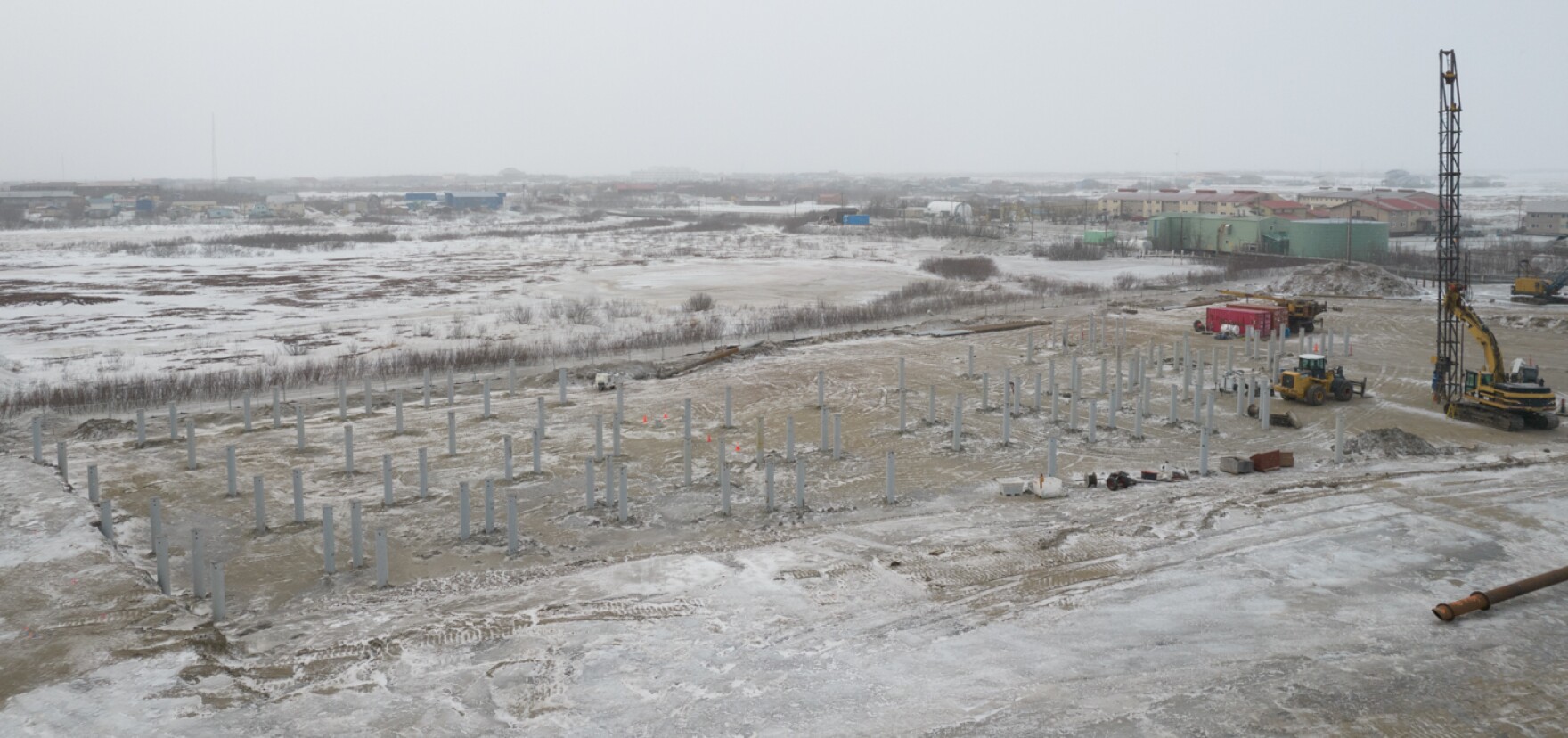
- Details
- By Greg Kim - KYUK
The Ayaprun Elitnaurvik Yup’ik Immersion School in Bethel is expanding in more ways than one. The immersion school is adding two extra grade levels. At the same time, construction for a new school building is well underway.
This fall, Ayaprun Elitnaurvik will offer seventh grade for the first time. The following year, the school will add eighth grade.
This story was originally published by KYUK on Monday March 22, 2022. Read the original story at KYUK. Republished by Native News Online with permission.
On March 2, the state board of education approved the Lower Kuskokwim School District (LKSD)’s request to expand Ayaprun into the extra grade levels. LKSD needed the state’s permission because Ayaprun is a charter school. One of its core missions is to develop students’ Yup’ik language proficiency.
“I think it gives a little longer for both languages to really flower, you know, bloom,” said Clarence Daniel, Lower Kuskokwim School District Board Chairman and a member of Ayaprun’s academic policy committee, about the immersion school’s expansion into junior high.
All five of Daniel’s children have gone through or are attending Ayaprun, which he says has helped them communicate with their family.
“We speak it at home, they speak it to their grandparents, they speak it when they visit our home village a lot,” Daniel said.
But Daniel said that Ayaprun is about more than just learning the Yup’ik language. It’s also about students learning Yup’ik culture. For example, when Ayaprun students learn about fish, he said, “The students can learn all of the components of the fish in the sciences and everything, the biology regarding the fish. And then you just turn to another page and you learn about how the fish is spiritually connected to culture and what it means for providing the subsistence way.”
Ayaprun Elitnaurvik Yup’ik Immersion School opened in the 90s as a kindergarten through sixth grade charter school. Since then, LKSD Superintendent Kimberly Hankins says that Ayaprun has become a pioneer and leader among language immersion programs nationwide.
“So we do frequently hear from other school districts around the state, asking us questions such as ‘How did you get started?' You know, can we share our curriculum materials?” Hankins said.
Ayaprun had to rewrite part of its curriculum after some of it burned in the fire that destroyed the former school campus in 2015. Ayaprun’s students moved into a building that used to be a grocery store and have stayed there.
Now, over six years later, the district is finally close to having a new school building after wrapping up a lengthy settlement dispute with its insurance companies. Earlier this month, the district’s contractors finished driving over 100 pilings into the ground for the new school’s foundation next to Bethel Regional High School.
It will still be a few more years before Ayaprun students can move into their new school. The district previously estimated it would be completed in 2023, but Hankins said that date was delayed.
“Contractors, you know, struggling to work with COVID delays, and then facing lack of materials or just availability of construction materials in general. So the new estimated completion date is summer of [20]24,” Hankins said.
The pandemic has not only delayed the project, it has dramatically increased the cost as well.
“And it's due primarily to increases in the costs and materials due to the pandemic,” Hankins said.
That new cost is around $8 million more than what LKSD estimated it would cost a few years ago. Last month, the LKSD board agreed to pay a contractor $50,888,250 for the project, whereas the district estimated it would cost around $42 to $43 million a few years ago.
Hankins said that the insurance settlement from the Kilbuck fire won’t cover that whole amount. Luckily, she said that the district has extra funds saved away.
Once it’s completed, the new Ayaprun campus will have enough room for seventh and eighth graders as there were extra classrooms in the design. Asked whether Ayaprun would eventually add a high school, Hankins said that was a fun idea to think about, and she added that the immersion school is looking into expanding into pre-K as well.
Help us defend tribal sovereignty.
At Native News Online, our mission is rooted in telling the stories that strengthen sovereignty and uplift Indigenous voices — not just at year’s end, but every single day.
Because of your generosity last year, we were able to keep our reporters on the ground in tribal communities, at national gatherings and in the halls of Congress — covering the issues that matter most to Indian Country: sovereignty, culture, education, health and economic opportunity.
That support sustained us through a tough year in 2025. Now, as we look to the year ahead, we need your help right now to ensure warrior journalism remains strong — reporting that defends tribal sovereignty, amplifies Native truth, and holds power accountable.
 The stakes couldn't be higher. Your support keeps Native voices heard, Native stories told and Native sovereignty defended.
The stakes couldn't be higher. Your support keeps Native voices heard, Native stories told and Native sovereignty defended.
Stand with Warrior Journalism today.
Levi Rickert (Potawatomi), Editor & Publisher

